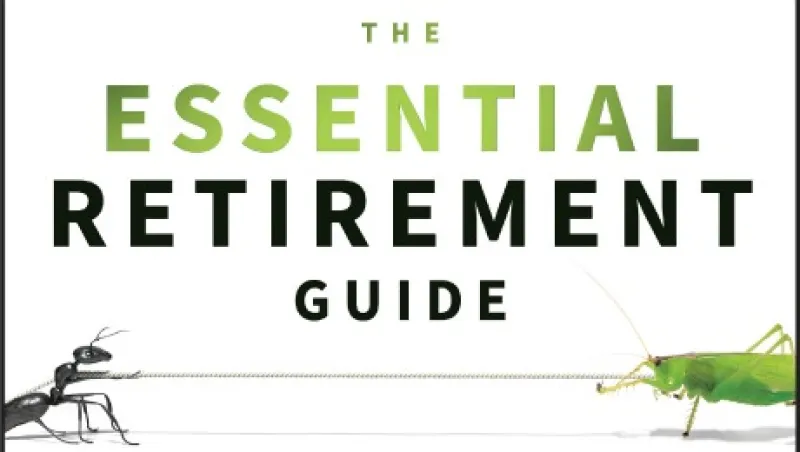Before sitting down to read The Essential Retirement Guide, the latest book by Frederick Vettese, take a moment to recall everything you know about retirement. Do you know the recommended percentage of preretirement income someone will need to be comfortable after he or she stops working? The preretirement savings goal required to provide that income? A safe withdrawal rate from retirement savings?
The reason to think about these things now is that then it will be that much more startling when Vettese, since 1991 the chief actuary for Toronto-headquartered human resources firm Morneau Shepell, systematically and yet succinctly questions, disputes and demolishes these notions. Practically every page in this book, which is accurately subtitled A Contrarian’s Perspective, yanks the supports from beneath one or more of the retirement planning field’s most cherished shibboleths.
Let’s start with preretirement income. The accepted rule of thumb is that a retiree needs approximately 70 percent of preretirement income to be financially secure after he or she stops earning. Of course, most planners treat this figure as only a general rule and caution that individual situations may vary. Nonetheless, Vettese makes a pretty good case that this rule is off target by distance much longer than any human thumb.
He starts by pointing out that few people actually spend 70 percent of their preretirement income on themselves even before they are retired. Before retirement, most people have major nonpersonal expenses such as kids, mortgages and — of course — retirement savings. A more typical preretirement personal consumption amount, he argues, is more like 50 percent. A long thumb indeed.
Further, Vettese observes that retirees tend to spend less on themselves than people who aren’t retired. They may splurge on travel, boats and other long-delayed indulgences in early retirement, but once that phase is over, they don’t spend much. And this tendency to spend less continues and accelerates as people age.
Vettese’s analyzes this topic, as well as others he explores, from macro- and microperspectives and employs both anecdotal and statistical data to make his points. He’s flexible, rather than dogmatic, and tends to back away from absolutist positions. On retirement income, he examines hypothetical case studies, cites surveys of retiree well-being and applies his own recollection of his parents’ retirement spending.
He also is quick with caveats. For instance, whereas he says that most moderate- and upper-income people very likely don’t need anything like 70 percent of preretirement income during retirement, low-income earners probably do need that much, because they are spending a greater proportion of their working income on daily expenses. He concludes this discussion by saying that there probably is no precise rule for postretirement income, but nonetheless, it is more likely to be closer to 50 percent than 70 percent.
Another tenet of retirement planning he takes on is the preretirement savings goal. Vettese makes a good case that one generally accepted savings goal — 8 percent of salary — will result in people significantly overfunding their retirement. A better rate for a young careerist, he says, is probably 6 percent. This will reduce the likelihood of unduly denying yourself early in life, in return for not having more money than you really need later on.
Now, as to the safe withdrawal rate from a retirement fund: This is a topic in the news lately, as some advisers suggest that it is too risky to follow the conventional formula allowing for a withdrawal of 4 percent of funds each year during retirement. The idea is that we are in an era of lower yields, so something like 3 percent or even less is probably more realistic and responsible.
Vettese is aligned with the low-yields thesis and makes a good case for it, basing his argument in part on demographic trends that indicate savings will rise while interest rates and consumption fall, depressing both fixed-income and equity returns for perhaps decades to come. He maintains, however, that unless you are fixated on leaving behind a large inheritance, withdrawing 5 percent a year is actually pretty safe. Even 6 or 7 percent might be acceptable, depending on portfolio asset allocation. Heresy it may be, but if so, it’s well-thought-out heresy.
Elsewhere, Vettese concludes that long-term care insurance is a doubtful need for most of us. He says that people are better advised to buy annuities upon retirement, and to do so in greater numbers past 80 or so. He warns that people who plan to manage their own portfolios in retirement are playing “rational roulette” by ignoring the likelihood that their intellectual capacities will decline after 75 some-odd birthdays.
This last idea may seem a bit harsh. Vettese himself notes that actuaries have a reputation for not being warm-and-fuzzy types. And he is clearly handy with a spreadsheet and data sets and employs techniques as sophisticated as the Monte Carlo simulation to support his conclusions. It’s also striking how thoroughly he infuses his analyses with humanity, however. He often notes the profound influence of emotion and perception on financial and investing topics. Where there is a lack of good data, he is prepared to offer personal stories and even common sense, rather than just throwing up his hands and declaring that we don’t know.
All told, this is a pleasant and informative critical examination of some of the accepted truths of retirement planning. The book might irritate you and make you think, both at once. And it manages to provide a lot of actionable advice for readers, whether lay or professional. Many books and authors claim the mantle of being “essential.” This one comes close to owning it.
Get more on pensions and wealth management .






